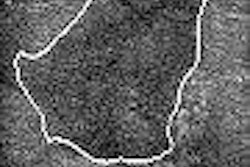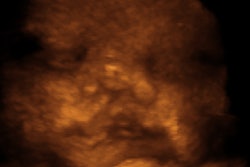
Ultrasound is moderately accurate in the diagnosis of substantial fatty atrophy of the supraspinatus or infraspinatus muscle, according to research published in Radiology.
"Although MR imaging remains the standard of reference for assessment of fatty atrophy of the rotator cuff muscles, the evaluation of supraspinatus and infraspinatus muscle belly should be included when shoulder US is performed in patients suspected of having rotator cuff tears," wrote a research team from the University Hospital Zurich in Zurich, Switzerland.
To prospectively evaluate the accuracy of ultrasound in depicting fatty atrophy of the supraspinatus (SSP) and infraspinatus (ISP) muscles, the team studied 65 consecutive patients with possible rotator cuff tears (Radiology, September 28, 2005). Ultrasound was performed immediately before and after MR arthrography by one of two musculoskeletal radiologists using a multifrequency linear probe (7-9 MHz) on an Elegra scanner (Siemens Medical Solutions, Malvern, PA).
Tissue harmonic imaging was used on all patients, and each muscle belly was evaluated in two planes. Images were then stored on a PACS network (Image Devices, Idstein, Germany) for later review.
At a later date, the two radiologists -- blinded to patient data and imaging parameters -- later evaluated the visibility of muscle contour, pennate pattern, central tendon, and muscle echogenicity. MR was used as the reference standard.
The accuracy, sensitivity, and specificity for ultrasound in diagnosing fatty atrophy in the supraspinatus and infraspinatus muscles for both readers are shown below, along with the readers' rates of overestimating and underestimating the grade of atrophy for the muscles.
|
|||||||||||||||||||||||||||||||||||
The study team found that the two readers more commonly overestimated the grade of supraspinatus muscle atrophy than they underestimated it.
The study team found that interobserver agreement for the supraspinatus muscle was moderate (k = 0.55), while agreement for the infraspinatus muscle was substantial (k = 0.71).
The authors acknowledged some study limitations, including the basing the accuracy of ultrasound evaluations on a selection of static images, which may be inferior compared with clinical routine when exams are performed dynamically. In addition, the relatively small proportion of patients with severe fatty atrophy may have reduced the diagnostic accuracy of ultrasound, the authors stated.
By Erik L. Ridley
AuntMinnie.com staff writer
October 19, 2005
Related Reading
No slam dunk: Partial cuff tears defy MRI, US diagnosis, June 17, 2005
Enthesopathy on shoulder MRI may tag severity of rotator cuff tears, February 24, 2005
Acromion evaluation proves tricky for x-rays and MRI, February 21, 2005
Standard and extremity MR bear brunt of shoulder imaging, November 17, 2004
Copyright © 2005 AuntMinnie.com



















